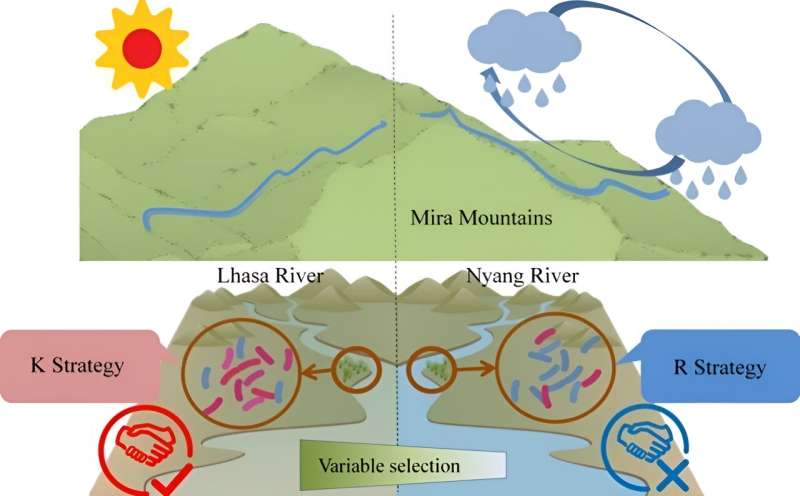This article has been reviewed according to Science X's editorial process and policies. Editors have highlighted the following attributes while ensuring the content's credibility:
fact-checked
peer-reviewed publication
trusted source
proofread
Climate shapes life-history traits of abundant bacteria in Qinghai-Tibet plateau

Microorganisms are essential to grassland soil ecosystems and play a critical role in biogeochemical cycles. Microbial communities can be classified into distinct ecological groups based on common life-history traits, which reveals the processes in highly heterogeneous microbial communities. However, our understanding of climate-dependent life history strategies and driving mechanisms of microbial community assembly in riparian grasslands is very limited.
Researchers from the Wuhan Botanical Garden of the Chinese Academy of Sciences (CAS) investigated the differences in the life history strategies of abundant and rare bacteria in riparian grassland soils of the Qinghai-Tibet Plateau under different climatic conditions and their effects on the composition, assembly processes, and functionality of the microbial communities.
The results showed that the abundant bacteria of the Qinghai-Tibet Plateau grassland soils in the Lhasa and Nyang watersheds exhibited different life history strategies due to pronounced differences in climate. The findings were published in Science of the Total Environment, titled "The unique climate shapes distinct life-history traits of abundant bacteria in Tibetan plateau grassland soil."
The abundant bacteria in the humid and warm climate of the Nyang River watershed were more characterized by the r-strategy (proteobacteria-dominated), while the abundant bacteria in the arid and harsh climate of the Lhasa River were more characterized by the K-strategy (acidobacteria-dominated).
The different life-history strategies of these bacterial communities resulted in different community compositions, assembly processes, coexistence patterns, and ecological roles of soil bacteria in the two different riparian grasslands.
The community assembly and niche width results suggested that the bacterial community in the Lhasa region was more susceptible to environmental selection than that in the Nyang region.
In addition, the competitive potential within bacterial communities was higher, and abundant bacteria in the Lhasa region had stronger cooperative potential and greater metabolic capacity than those in the Nyang region.
This is the first study to investigate the life-history strategies of abundant vs. rare bacteria. It shows that differences in life-history strategies of abundant bacteria are much more significant than those of rare bacteria.
This research reveals the life-history strategies of bacteria of different abundance in the context of global climate change and how they maintain biogeochemical cycles in riparian grassland ecosystems.
More information: Shuxin Liang et al, The unique climate shapes distinct life-history traits of abundant bacteria in Tibetan Plateau grassland soil, Science of The Total Environment (2023). DOI: 10.1016/j.scitotenv.2023.168353
Journal information: Science of the Total Environment
Provided by Chinese Academy of Sciences




















